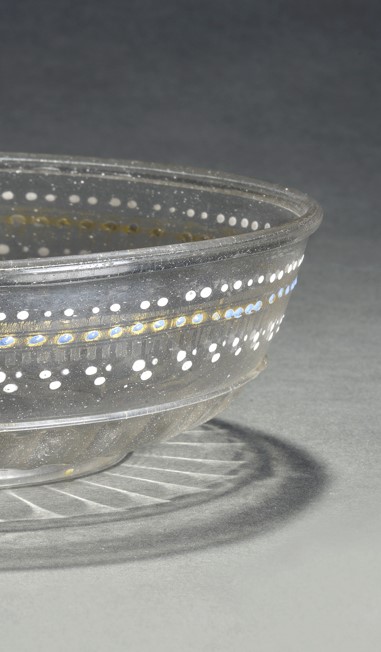
Alzata with cable of aquamarine coloured glass
Colourless and aquamarine coloured glass
Venice
Provenance: Hans Gerny collection,
Alzata with a flat round plate, folded upwards at
the rim. The plate is decorated on the underside
by two ribbed concentric threads with a cable of
aquamarine glass in between. Blown trum
pet-shaped foot with downwardly folded rim.
Horizontal colourless thread on the foot one cen
timeter above the rim.
These alzate were very popular in the beginning
of the eighteenth century. Many examples have
survived (for example: Theuerkauff-Liederwald
1994, 53-59, p. 111-116). They exist in many diffe
rent sizes. Their use is known as they are depic
ted in various paintings. In a painting executed
around 1755-1760 by Pietro Longhi
(Theuerkauff-Liederwald 1994, p. 113, fig. 11) a servant with an
alzata with two glasses and a decanter approa
ches a lady (fig. 1), while another with a beaker
stands alongside. Like the eighteenth-century
English tazzas they can also be stacked. In
England these pyramids of footed trays were
used to serve desserts. A stack of Venetian or
façon de Venise ones piled with fruit is depicted
in a painting by Sebastian Stosskopf (1597-1657)
(Theuerkauff-Liederwald 1994, p. 114, fig. 12).
The trays were made with two types of feet: a foot
with a construction one third of the way down
(Laméris & Laméris 2015b, cat. no. 18) and a trum
pet-shaped foot such as the one of the glass de
picted here.
Bill Gudenrath shows how these cables were ma
nufactured. While making a ‘Lidded Goblet with
Aqua Chain’ he shows how he pulls two aquamari
ne coloured threads parallel around the bowl and
then brings them together at certain intervals with
a pincer.
Literature: Laméris and Laméris 2015b, cat.no. 18,
Theuerkauff-Liederwald 1994, cat.no. 53-59




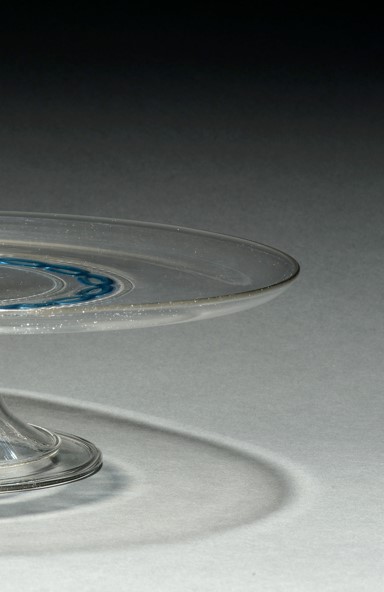
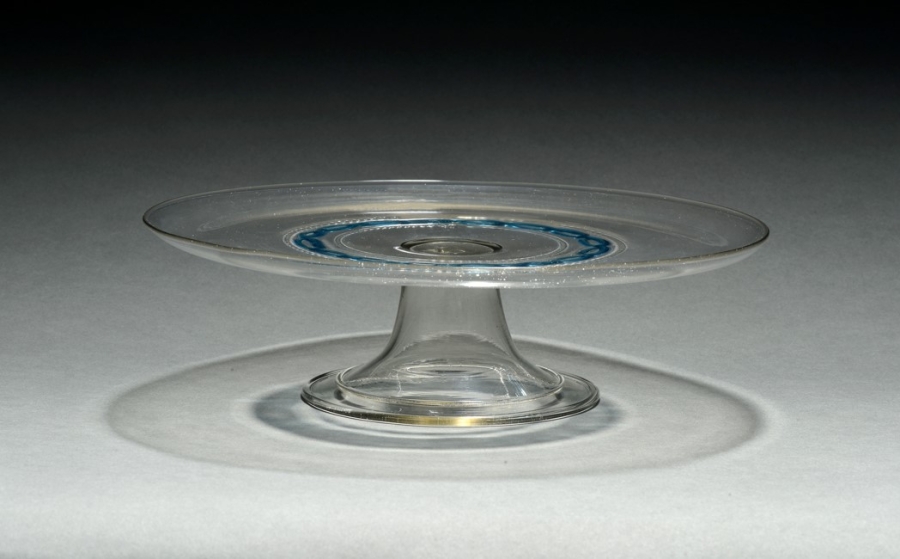
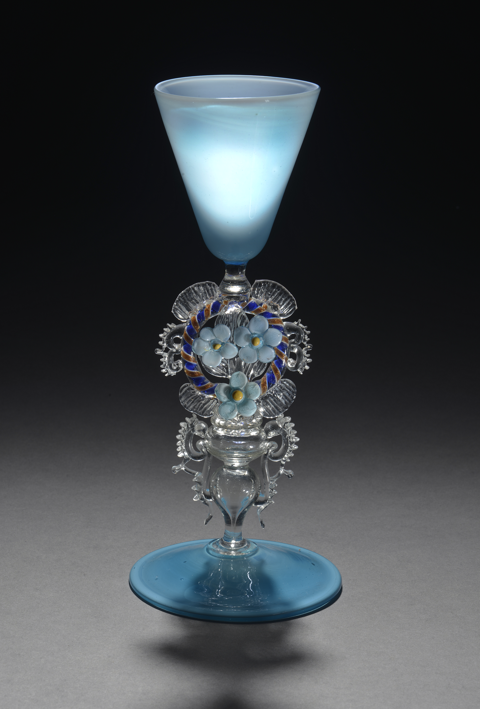



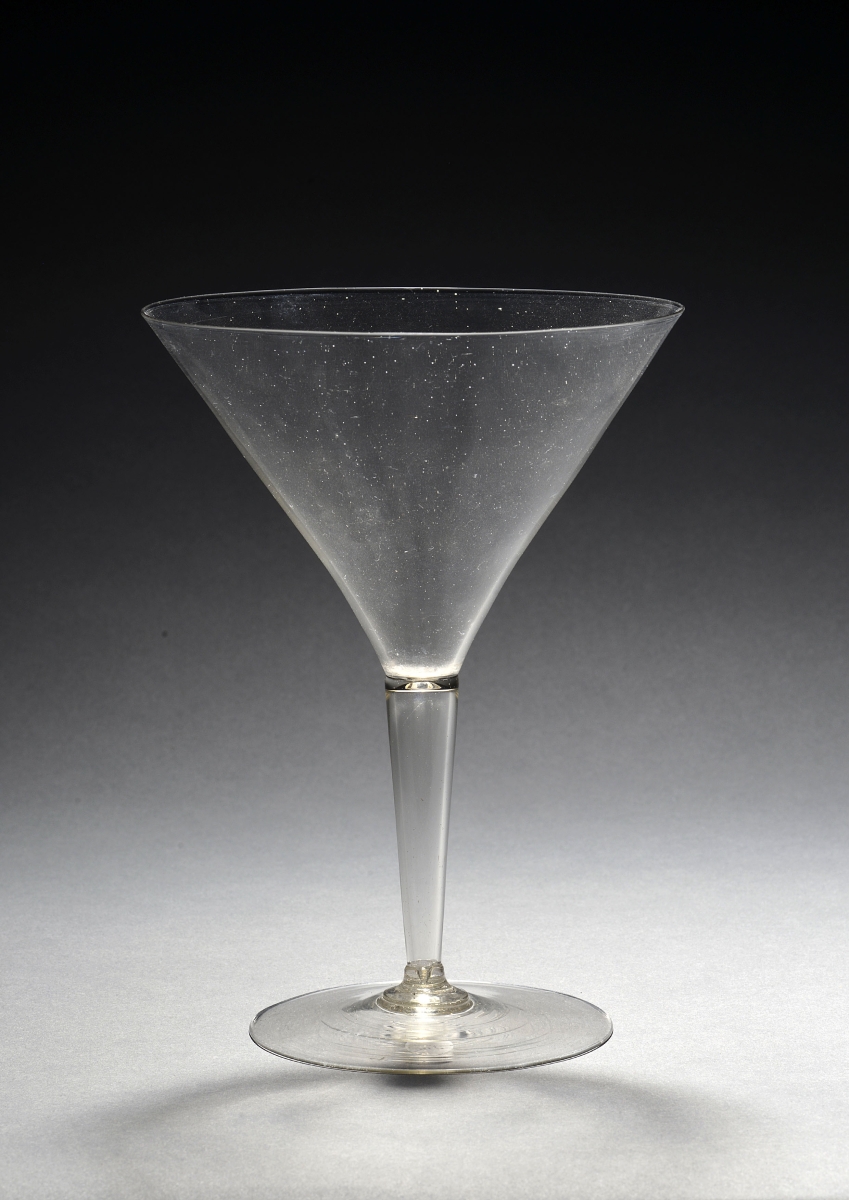
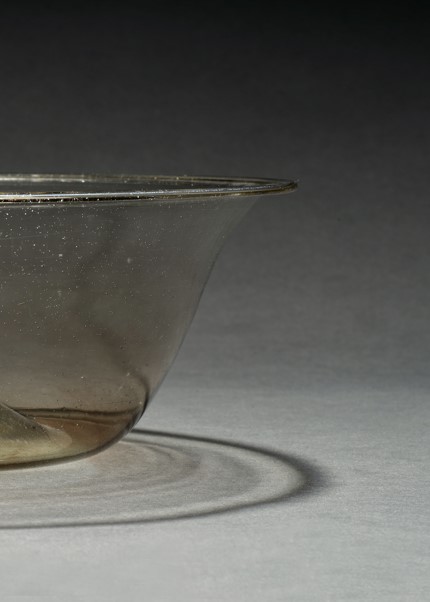
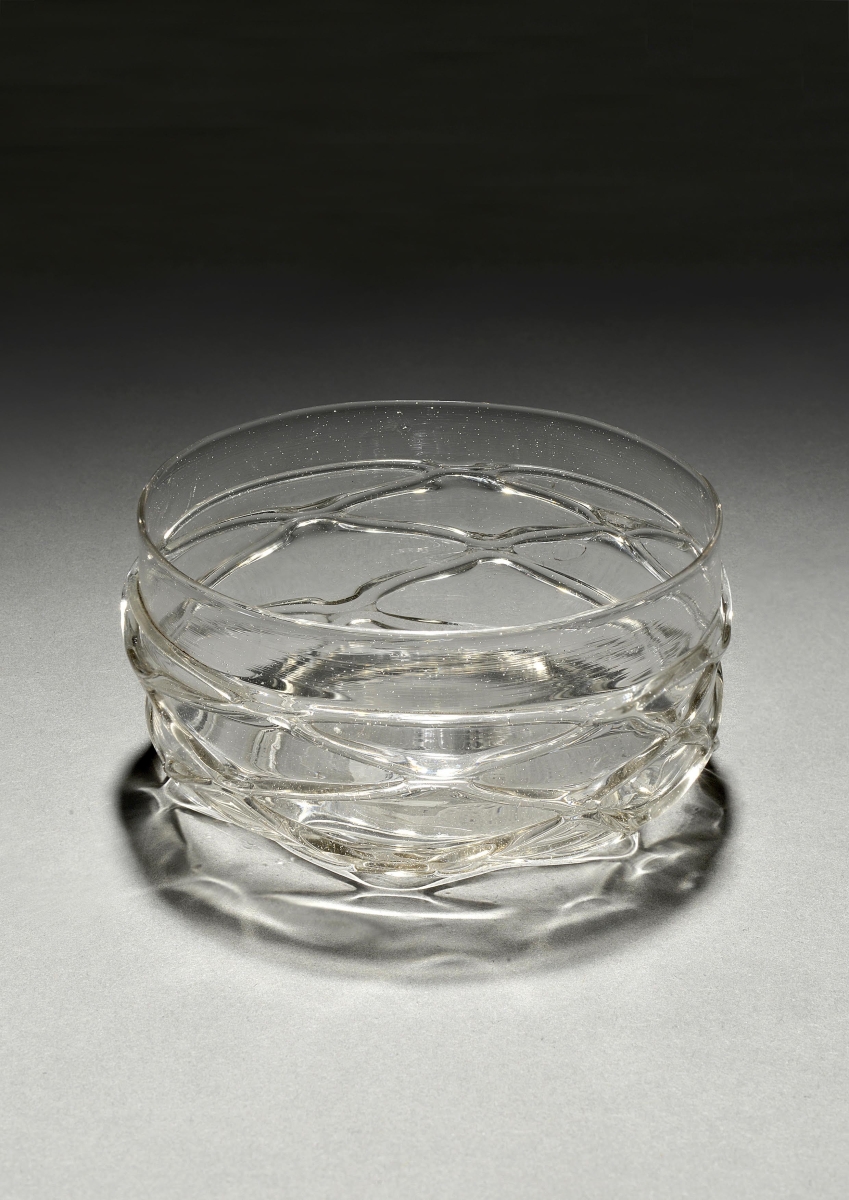
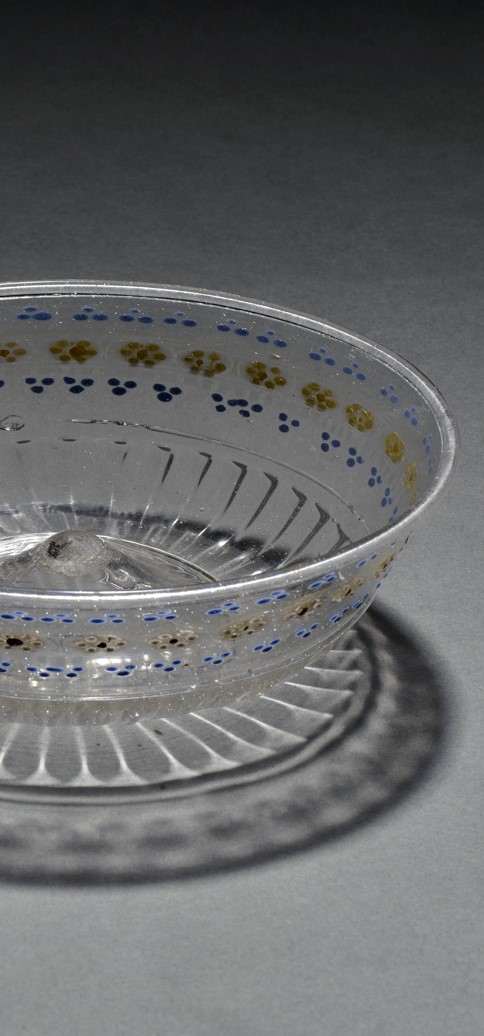
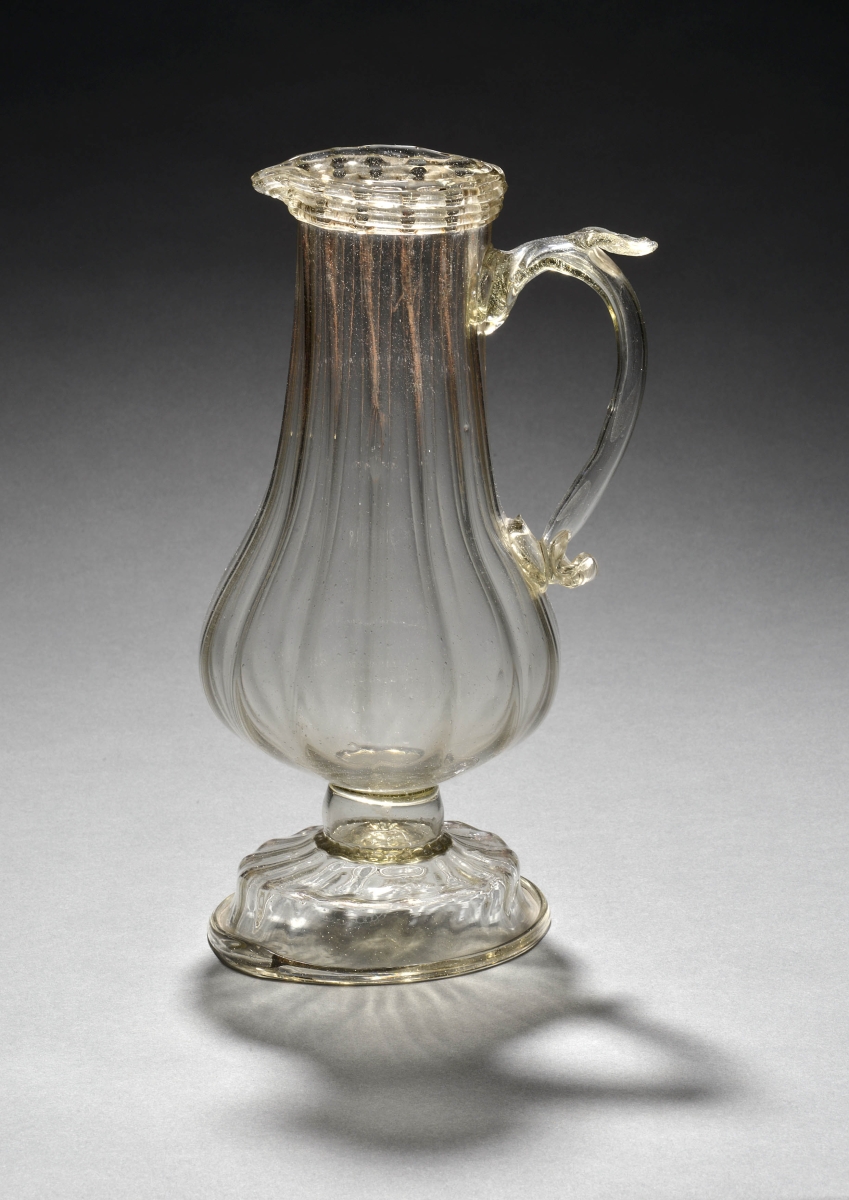
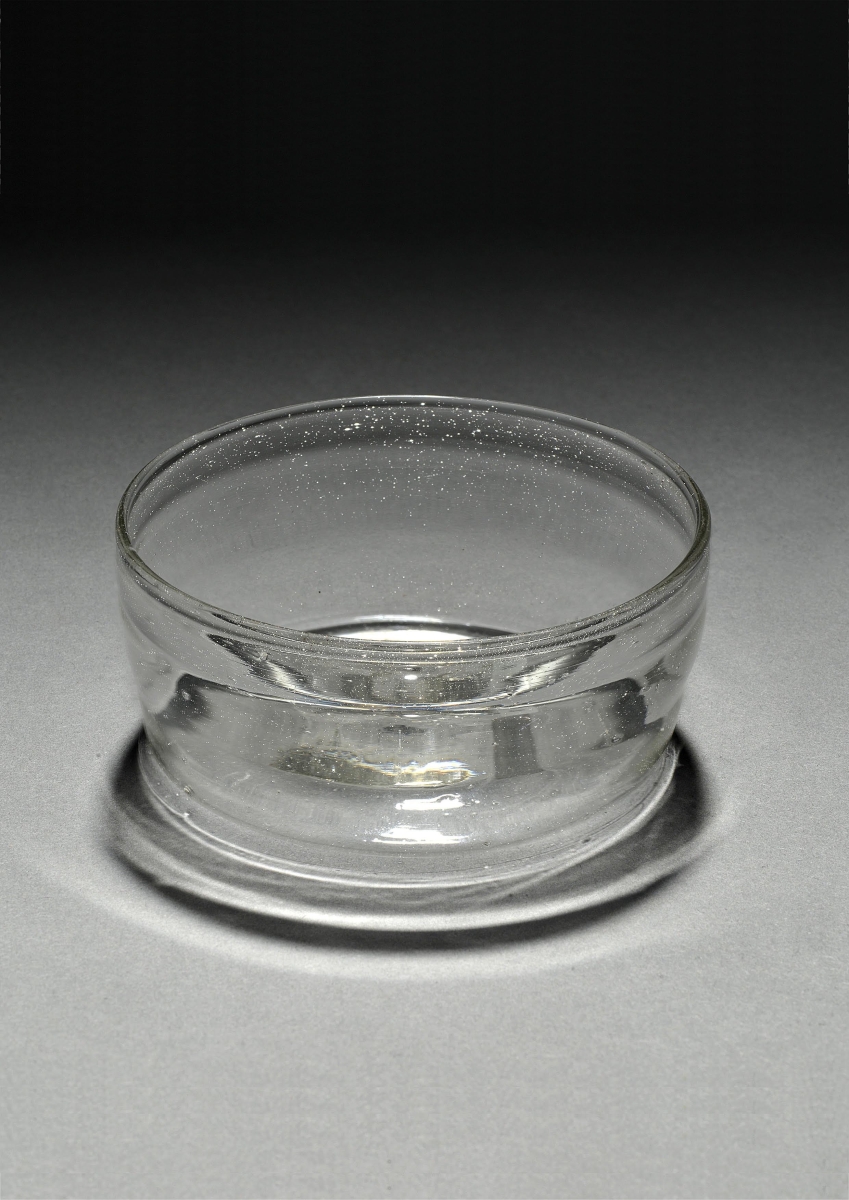
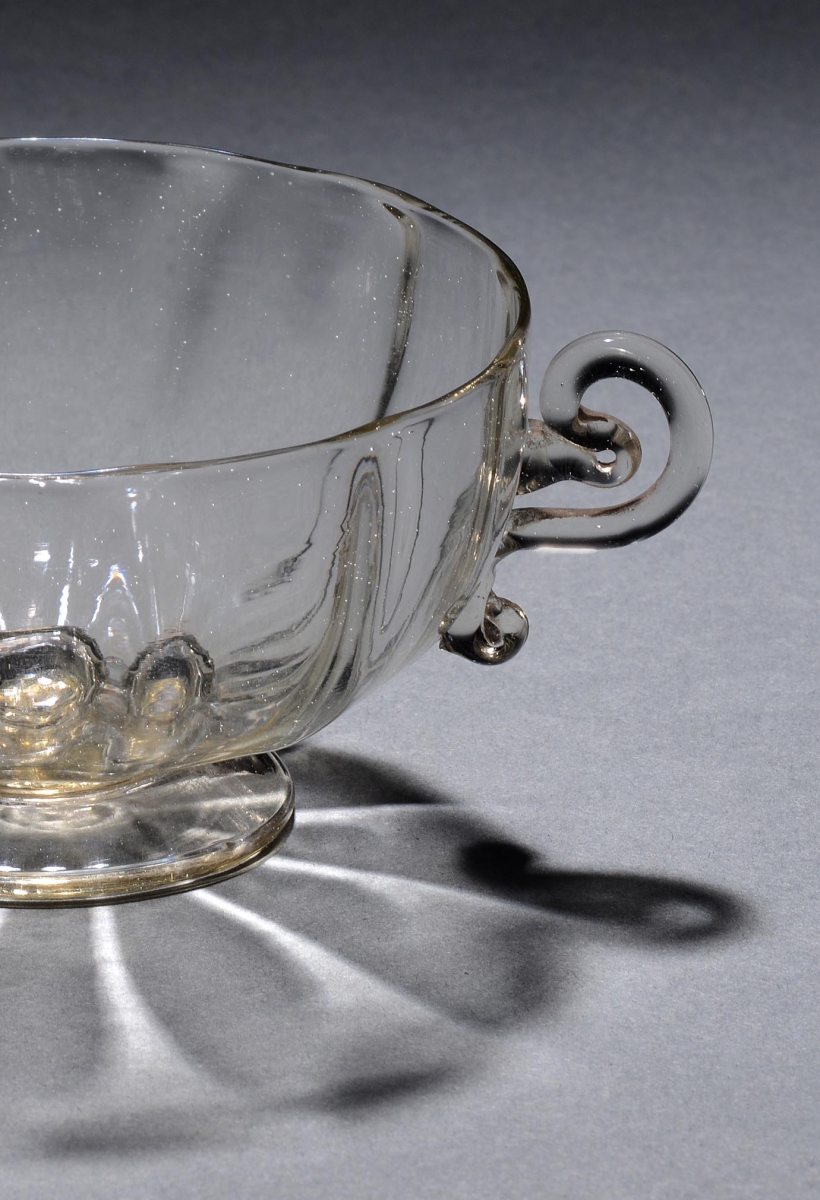
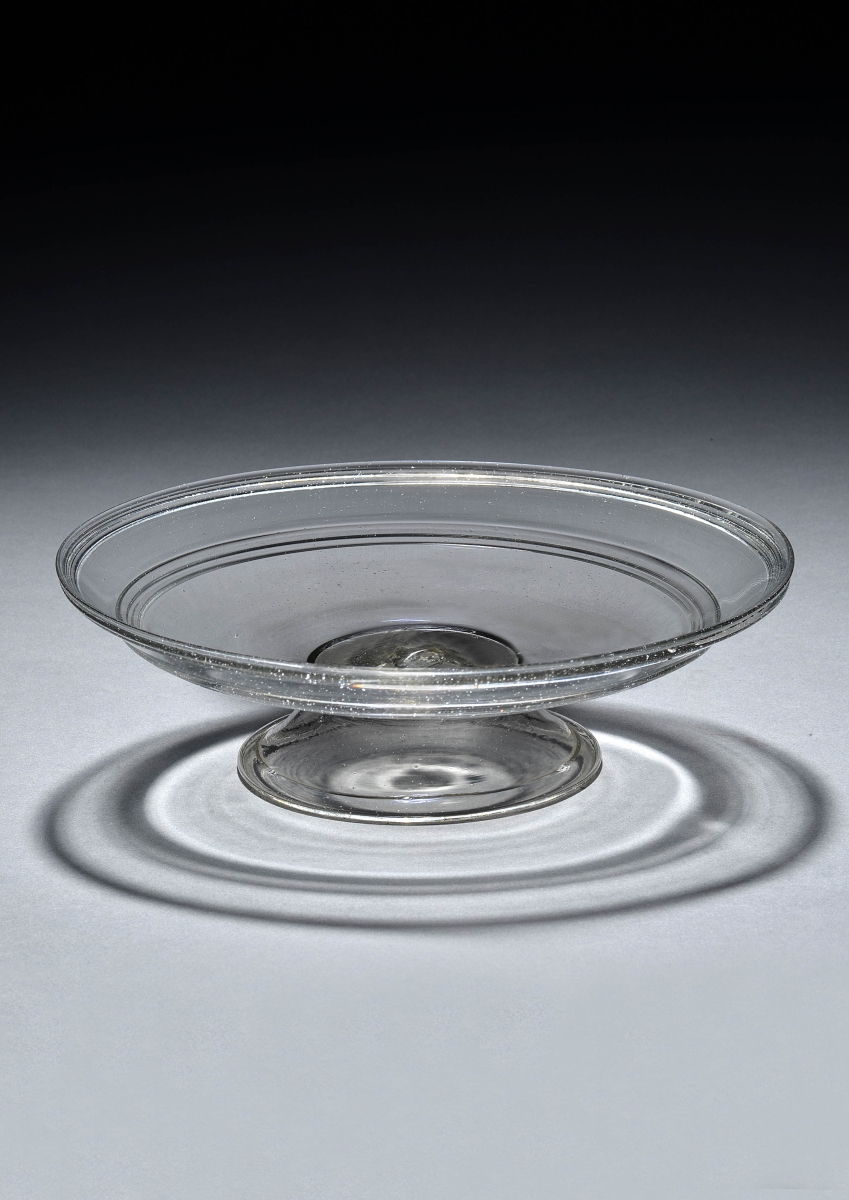
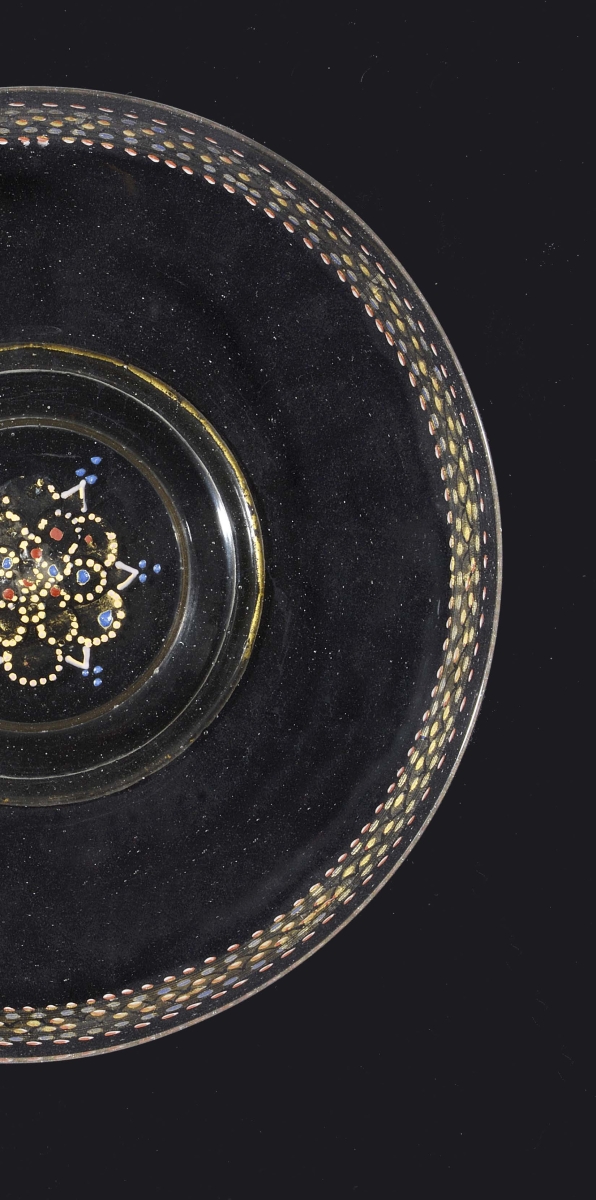
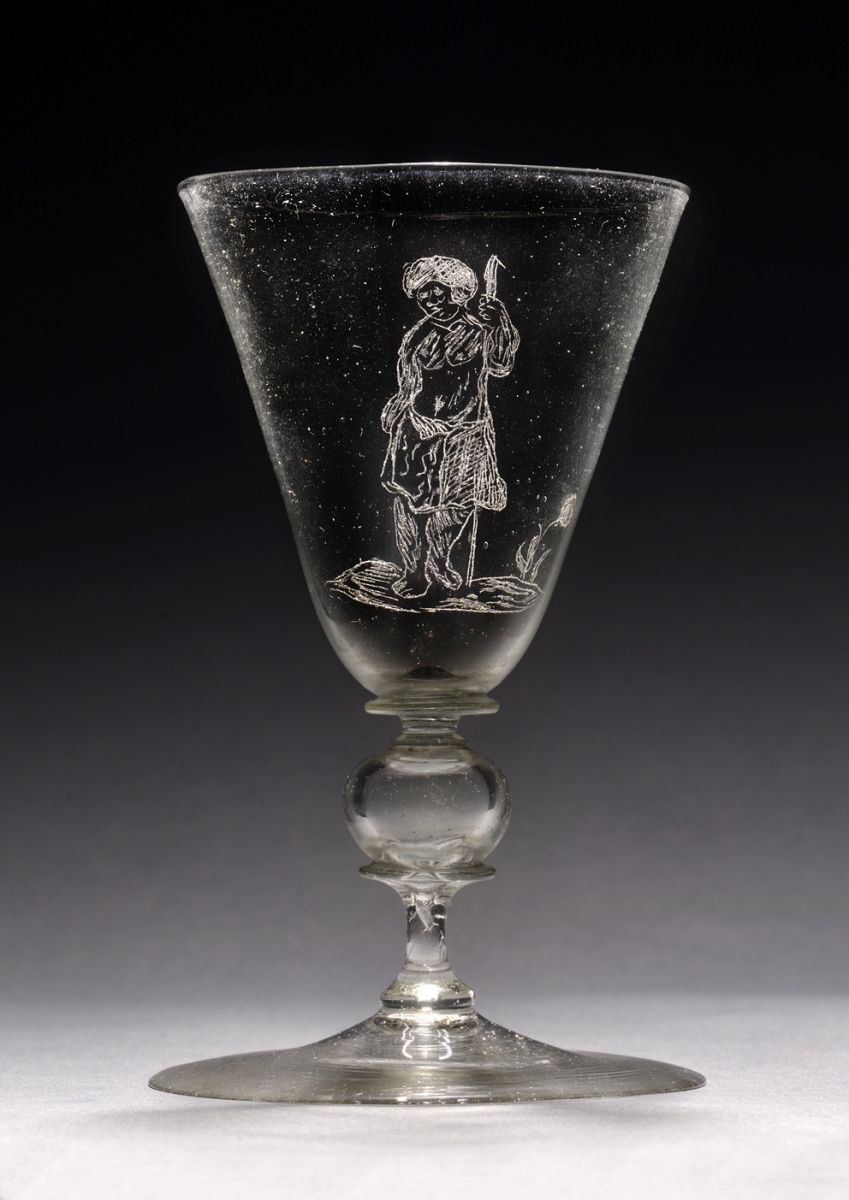
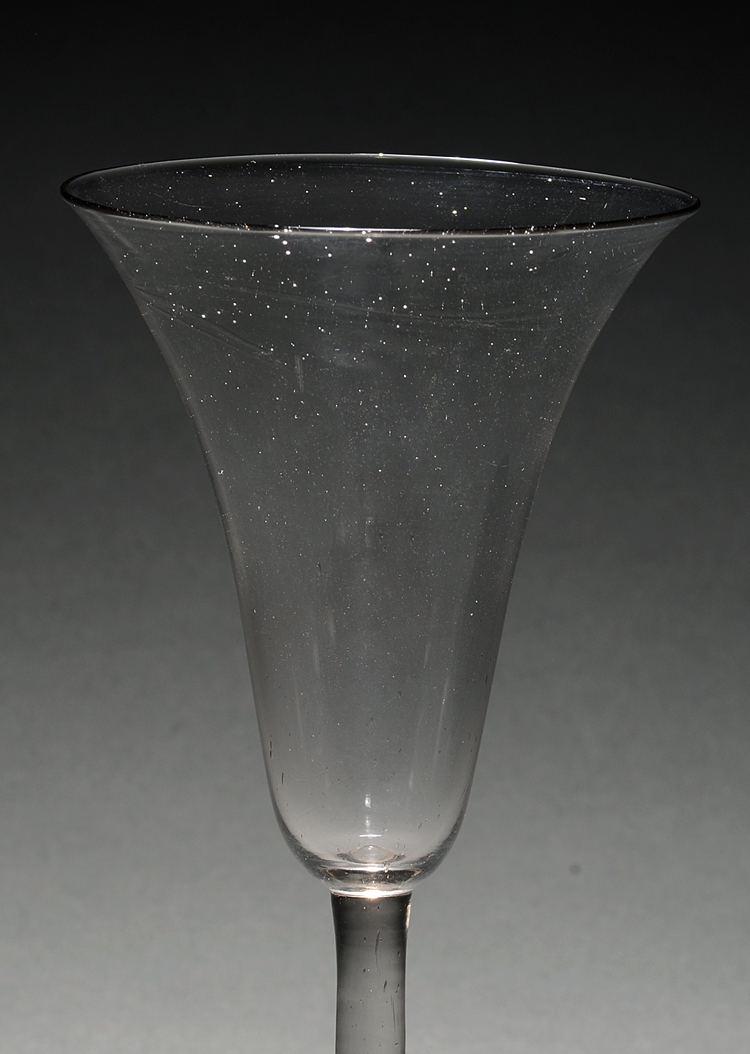


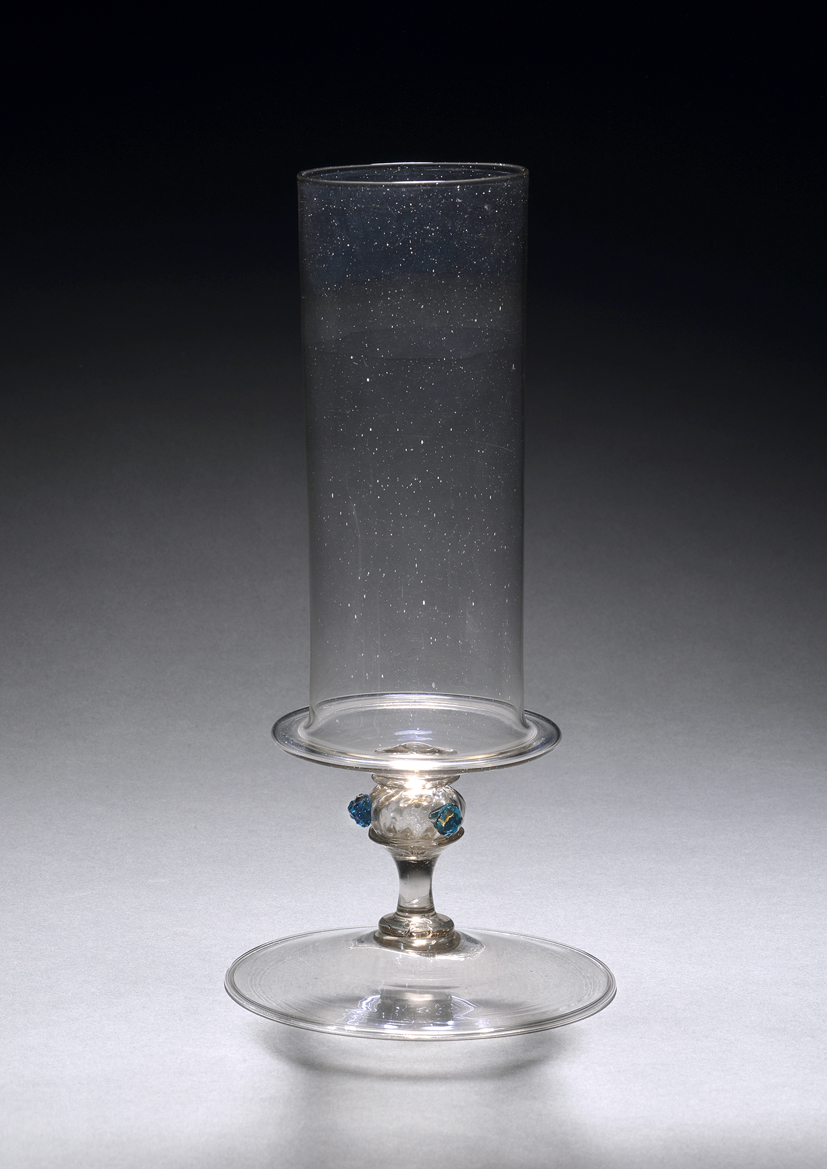
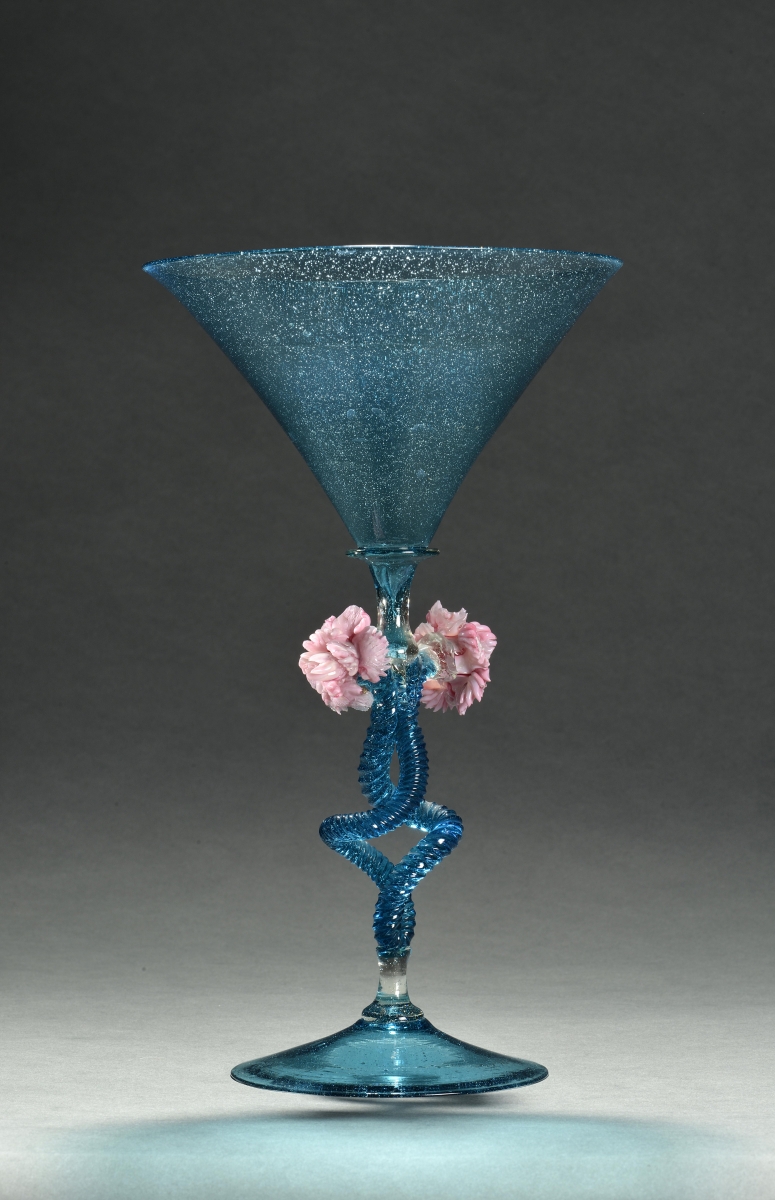
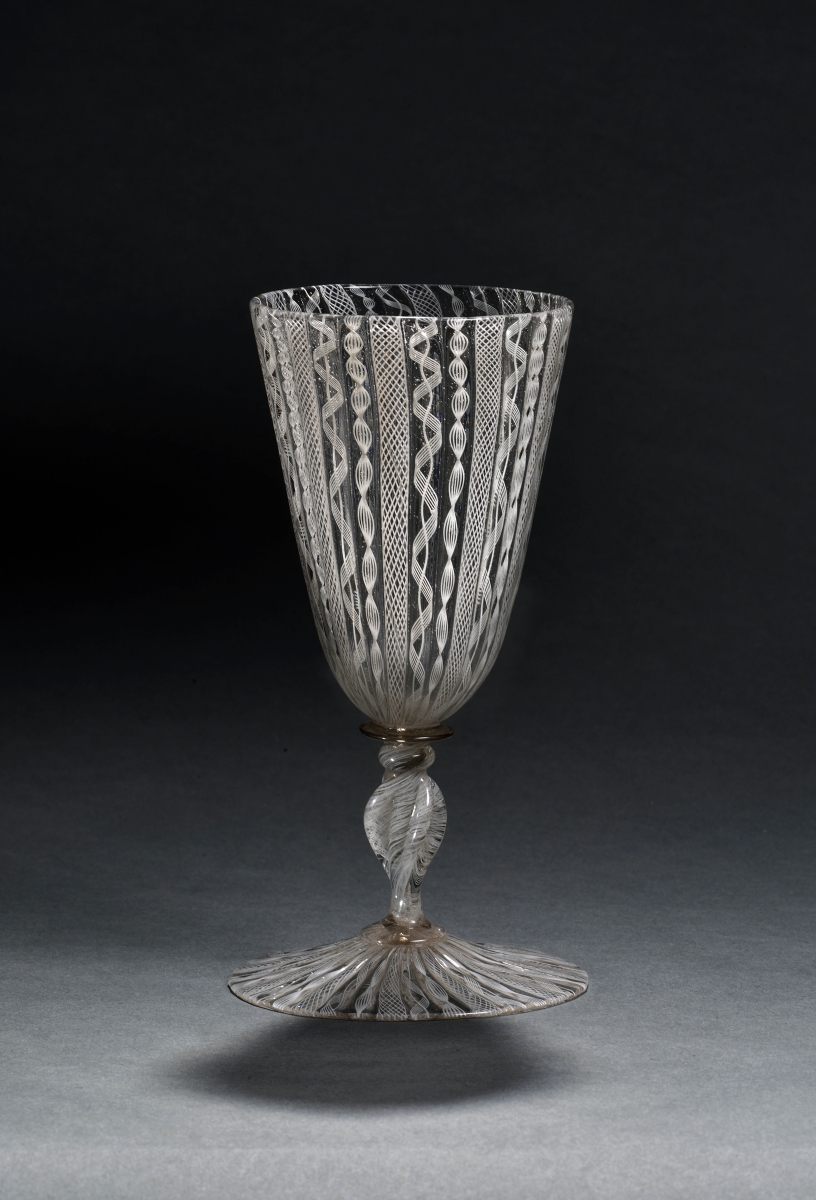
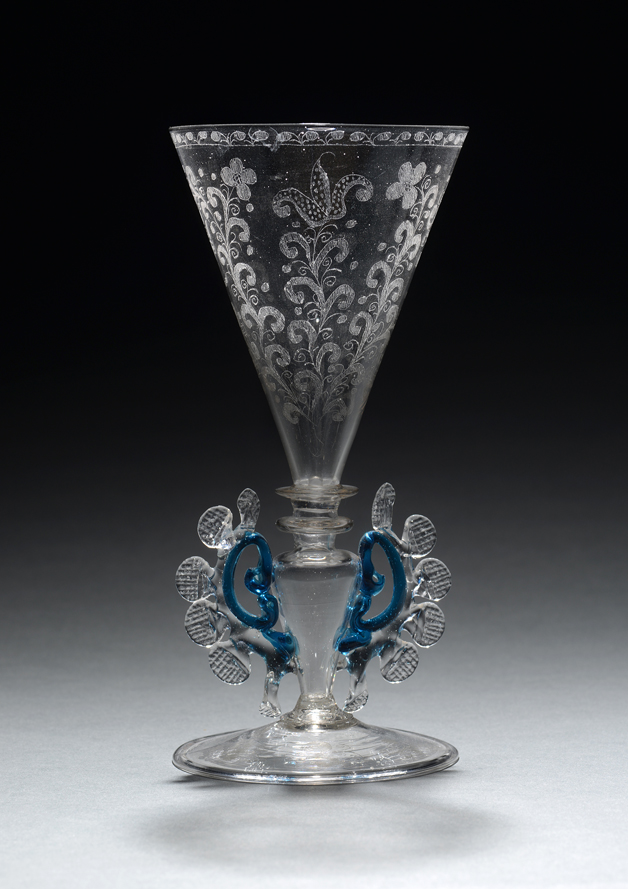
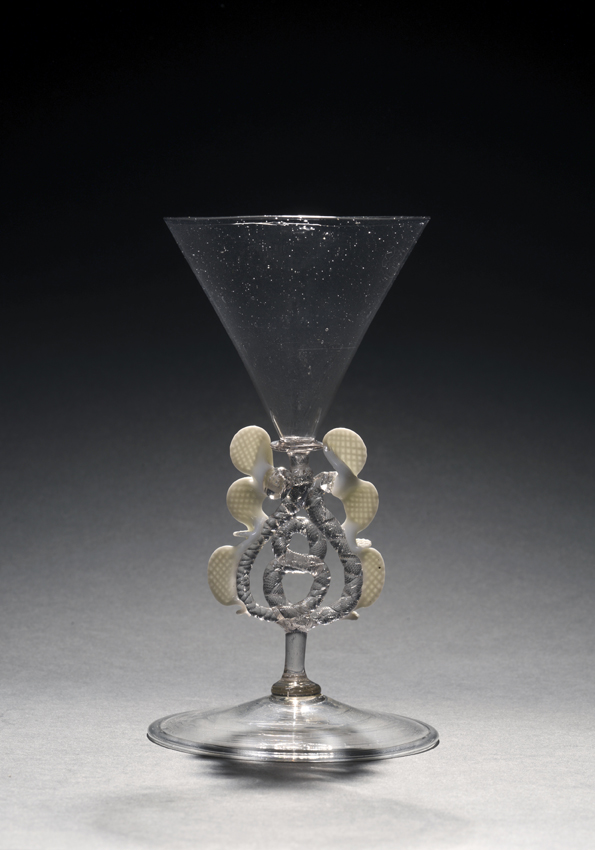

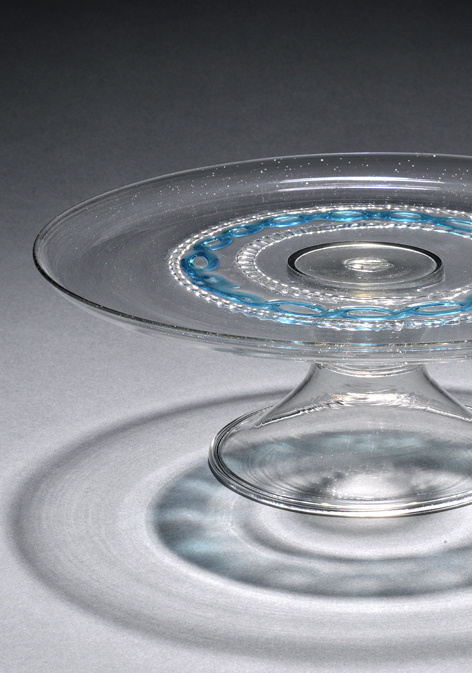
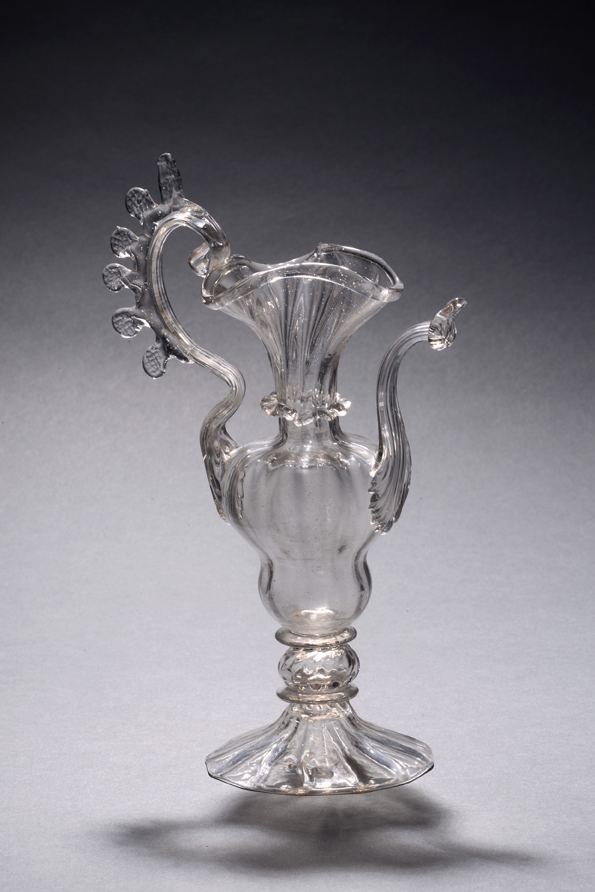
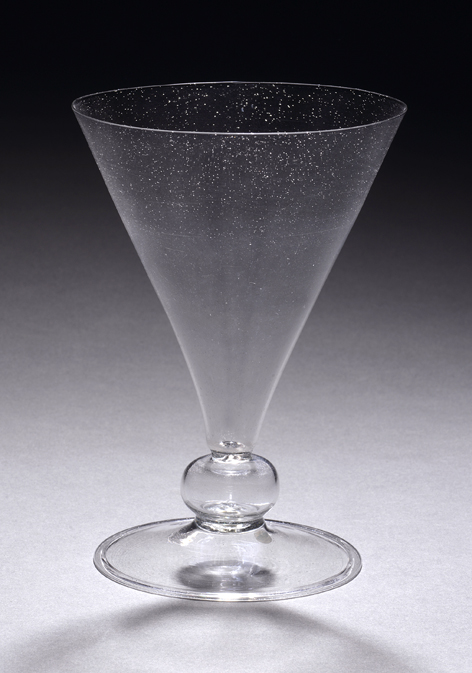


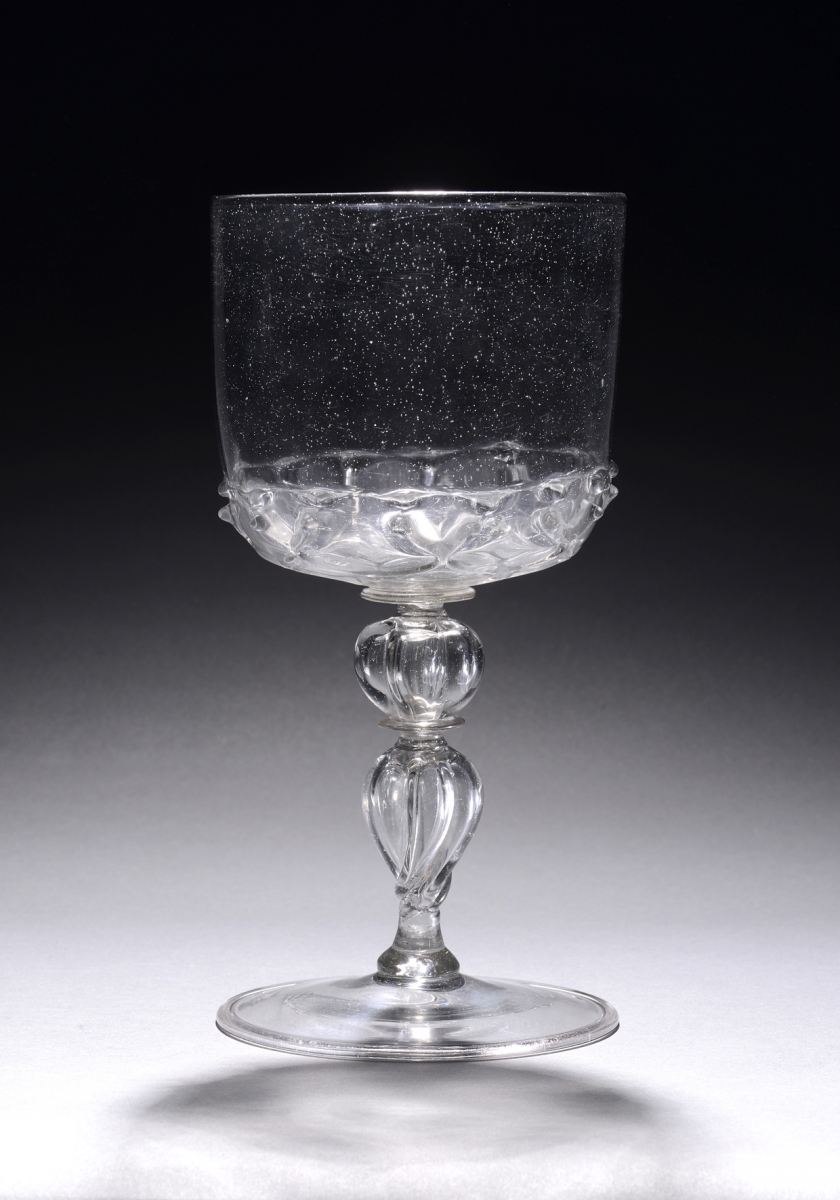

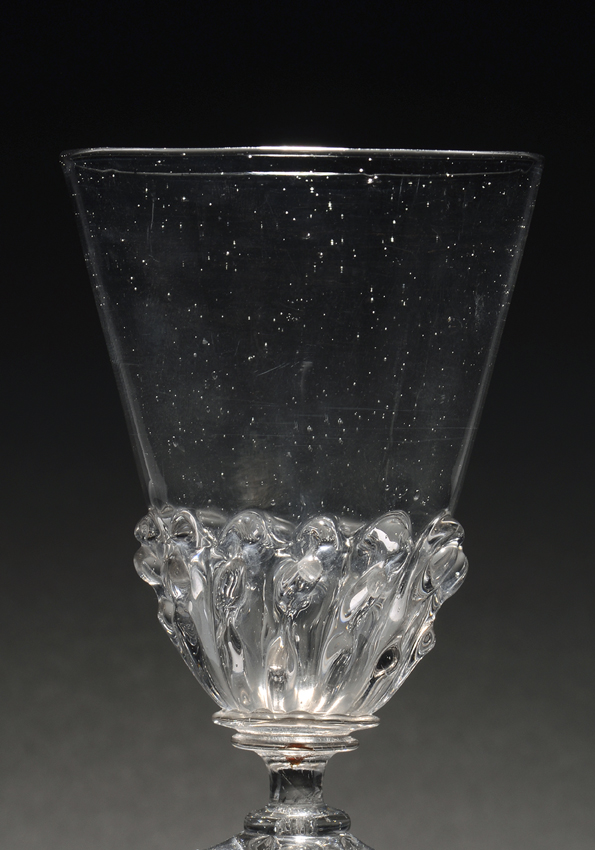


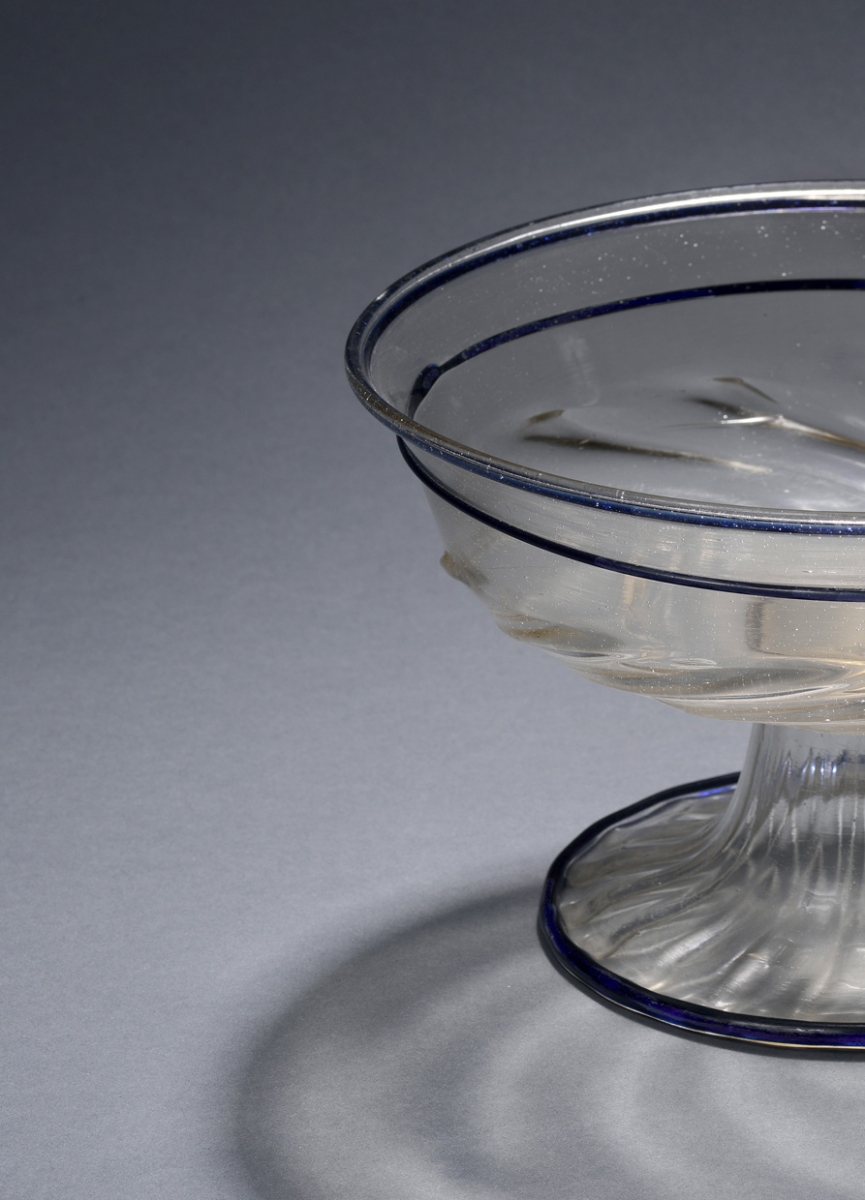
 NIEUWE SPIEGELSTRAAT 55
NIEUWE SPIEGELSTRAAT 55